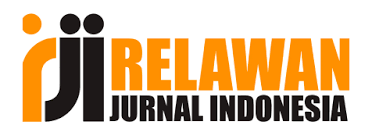The Use of Possessive and Plural Suffixes in the Dialect of Ethnic Arabs in Ishtixon
Abstract
Uzbek dialects show enormous diversity in Central Asia, a homeland of many nationalities and the centre of ancient history. One of these is the dialect of the ethnic Arabs in the town of Ishtixon in the region of Samarkand, which possesses its own distinctive characteristics. It is characterized by aspects of Arabic linguistics mixed into the Uzbek language environment, especially in suffix systems for possession and plurality. Like other varieties, however, the Ishtixon Arab dialect has not been researched in detail and its possessive and plural suffixes which are сharacterised by deviations from standard Uzbek, has not been discussed. The purpose of this research is to study the features of the form, meaning and function of the possessive and plural suffixes in the Ishtixon Arab dialect, their phonetic and morphological features and the relationship of this dialect with literary Uzbek. The study argues that though the Ishtixon dialect has maintained some of the innovations found in their possessive and plural suffix systems including particular patterns of unique vowel harmony and consonant alternations these patterns also have some less regular features that appear to have originated locally and thus suggest resistance to certain innovations. These features set it apart from the literary Uzbek language. An illustrative case of this morphological development is provided by the suffix systems in the Ishtixon dialect, showing how Arabic influence and local Uzbek innovation interact in the dialect.
References
S. Ashirboyev, O‘zbek dialektologiyasi. Toshkent: Nodirabegim, 2021, p. 91.
H. G‘ulomov, O‘zbek tilining Jizzax shevasi, PhD diss., Toshkent, 1954, p. 86.
O‘zbek xalq shevalari morfologiyasi. Toshkent: Fan, 1984, p. 22.
N. Rajabov, O‘zbek tilining g‘arbiy Samarqand shevalari. Toshkent: Fan, 1977, p. 66.
G‘. Abdurahmonov, Sh. Shukurov, va Q. Mahmudov, O‘zbek tilining tarixiy grammatikasi. Toshkent: O‘zbekiston faylasuflari milliy jamiyati, 2008, pp. 80–81.
N. K. Dmitriev, “Kategoriya chisla,” ISGTYa, vol. II, Moscow, 1956, pp. 68–70.
G. G. Chikovani, Morfologicheskaya struktura Kashkadaryinskogo dialekta arabskogo yazyka. Tbilisi, 1988.
V. V. Reshetov and Sh. Shoabdurahmonov, O‘zbek dialektologiyasi. Toshkent, 1978.
B. Jo‘rayev, Yuqori Qashqadaryo o‘zbek shevalari. Toshkent, 1969.
M. Mirzaev, “Buxoro o‘zbek va tojik shevalarining o‘zaro munosabati to‘g‘risida,” O‘zbek dialektologiyasidan materiallar, no. 11, Toshkent, 1961.
S. Rahimov, O‘zbek tilining Surxondaryo shevalari. Toshkent, 1985.
T. Sodiqov, Leksika govor Toshkentskoy oblasti. Toshkent, 1968.
N. Shoimova, O‘rta Qashqadaryo “Je” lovchi qipchoq shevalari leksikasi. Toshkent, 1999.
A. Allaberdiev, Buxoro o‘g‘uz shevalari leksikasi. Toshkent, 2018, p. 34.
S. Usmonov, “Tilining lug‘at tarkibida tojik-fors va arabcha so‘zlar,” Navoi’ga armug‘on. Toshkent: Fan, 1953, pp. 121–122.

















